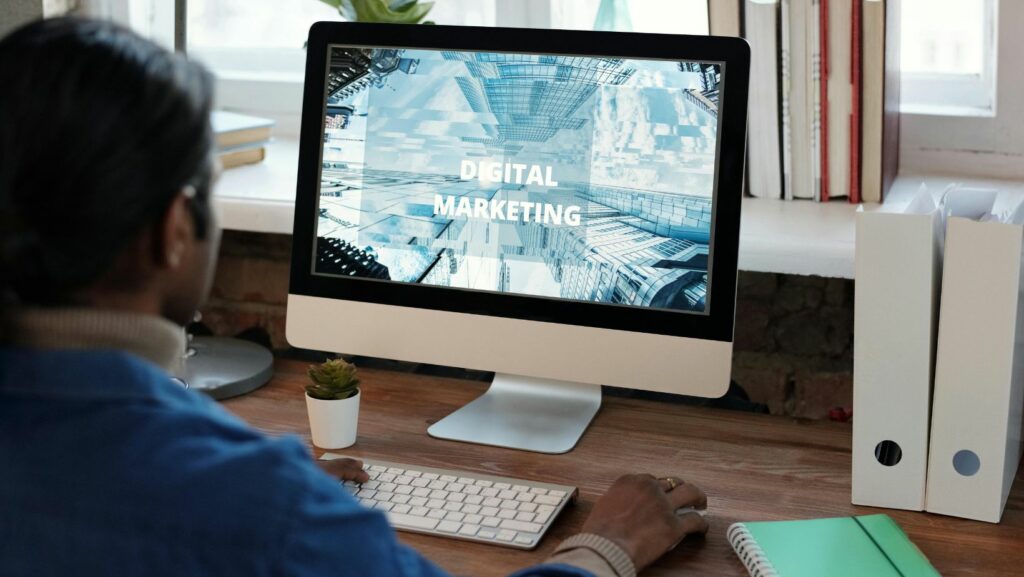Ever feel like you’re throwing time and money at ads, posts, and emails yet growth still feels out of reach? You’re not alone. Many ecommerce brands chase quick wins or the latest marketing trend, only to end up with scattered results and wasted resources. But here’s a crucial insight: tactics without strategy rarely create long-term impact. A structured marketing strategy aligns every effort whether it’s social, email, or paid ads towards clear goals. That’s how you move from busy activity to real, measurable growth. In this guide, we’ll explore how to build a strategy that actually drives your brand forward.
1. Define Your Brand Positioning and Target Audience
So, what truly sets your brand apart? Defining your positioning means clarifying the promise you deliver and the value customers can’t find elsewhere. Without this clarity, even the best campaigns will feel generic. Start by asking: Who are we serving, and what do they care about most? Build audience personas that highlight demographics, buying behaviours, and emotional drivers. For example, a sustainable fashion brand might appeal to eco-conscious professionals aged 25–40 who prioritise ethics over price. When you know exactly who you’re speaking to and why they should choose you, every message feels sharper, stronger, and far more persuasive.
2. Set Measurable Goals That Align With Growth
What does growth actually look like for your brand? Too often, businesses set vague goals like “sell more products” or “get more followers.” Instead, set SMART objectives: specific, measurable, achievable, relevant, and time-bound. For example, aim to “increase repeat purchase rate by 20% over six months” or “grow email subscribers by 1,000 by the end of the quarter.” These goals create focus and accountability, ensuring every marketing action drives towards a clear outcome. Think of them as your roadmap when goals are measurable and aligned with business growth, you can track progress, adjust faster, and celebrate wins that truly matter.
3. Map the Customer Journey
Have you ever stopped to consider how customers actually find, trust, and buy from your brand? Mapping the journey means looking beyond a single purchase to the entire experience. Break it into five stages: Awareness, Consideration, Purchase, Retention, and Advocacy. Each requires different touchpoints. At the awareness stage, content marketing and ads spark interest. During consideration, reviews and social proof build trust. Retention hinges on follow-up emails and post-purchase care. By visualising this journey, you can ensure every step feels seamless. More importantly, you’ll identify where customers drop off and where to invest in improvements that drive long-term loyalty.
4. Choose the Right Marketing Channels for Your Brand
Not every channel deserves your time or budget. The key is finding where your ideal customers spend their attention and choosing platforms that deliver a strong return. For instance, Instagram might work well for lifestyle brands, while LinkedIn Marketing suits B2B businesses. A balanced strategy often combines short-term drivers (like paid ads) with long-term assets (like SEO and email). Ask yourself: Which channels align with my goals and resources? By doubling down on what’s effective rather than chasing every new trend, you’ll create a leaner, more powerful strategy one that ensures your message reaches the right people at the right time.

5. Create a Content and Campaign Plan
Consistency is where brands either stand out or fade away. A content and campaign plan ensures your messaging feels structured, strategic, and aligned with customer needs. Start by mapping key dates: product launches, seasonal events, and industry trends. Then, plan content that addresses customer pain points, answers common questions, and tells your brand story. A mix of formats blogs, email sequences, ads, and social posts keeps things fresh and engaging. Use a content calendar to stay on track and avoid last-minute scrambling. When customers see consistent, helpful messaging, they’re more likely to trust your brand and move closer to purchase.
6. Leverage Data and Analytics to Optimize
Here’s a crucial insight: what you measure determines what you improve. Data helps you separate guesswork from growth. Track key performance indicators like conversion rate, customer acquisition cost, and lifetime value. These numbers reveal what’s working and where you’re losing money. For example, if ads bring traffic but few conversions, maybe your landing page needs refining. Experiment with A/B tests on subject lines, headlines, or call-to-actions to pinpoint what resonates. Small tweaks, backed by data, compound into big gains over time. By committing to a cycle of testing, learning, and refining, you’ll optimise campaigns and scale your ecommerce brand with confidence.
7. Focus on Retention and Customer Loyalty
Did you know it costs up to five times more to acquire a new customer than to keep an existing one? That’s why retention is a growth multiplier. Beyond the first purchase, think about how you’ll turn buyers into loyal fans. Loyalty programs, personalised email offers, and proactive customer service all build stronger relationships. Even a simple thank-you note or surprise discount can make customers feel valued. Loyal customers spend more, buy more often, and recommend your brand to others. By focusing on retention, you’re not just growing sales, you’re building a community that fuels sustainable, long-term success.
Building a Strategy That Grows With You
Lasting growth doesn’t come from chasing every new trend it comes from consistent, strategic action. Even small steps, taken regularly, build momentum and create measurable results over time. The key is starting with a clear plan, aligning your efforts with your goals, and refining as you go. So, where should you begin? Focus on one priority, take action, and build from there. With discipline and strategy, your ecommerce brand can thrive not just today, but well into the future.

